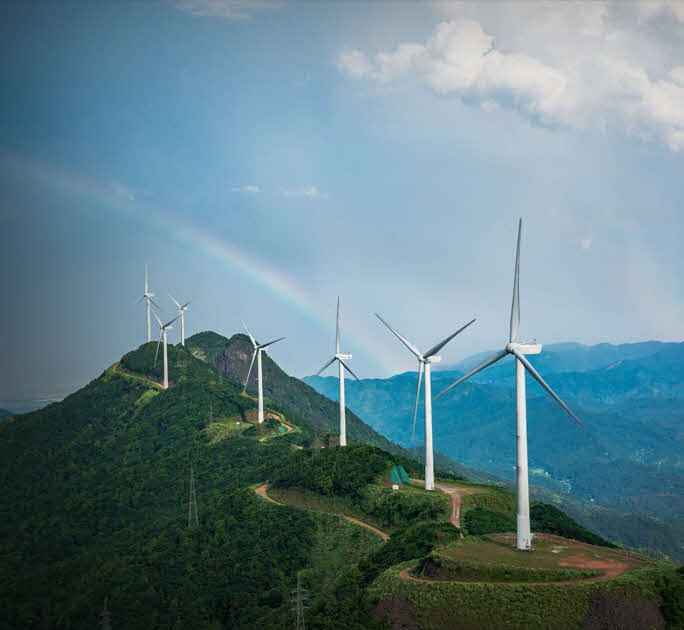Tipping point for GSS bonds
Global market for Green, Sustainable and Social (GSS) bonds is primed for exponential growth and major regulatory changes, say experts at climate bonds forum.

As the pandemic further stokes public awareness and political support for sustainable finance, the global market for Green, Sustainable and Social (GSS) bonds is primed for exponential growth and major regulatory changes.
Investor appetite for GSS bonds is red-hot, but supply lags far behind, especially in Asia. The good news is, there are under-the-radar opportunities to close this gap – in the form of well over US$900 billion in unlabelled climate-aligned bonds – and almost half of these are in the Asia-Pacific region.
These insights, and more, were shared at two webinars featuring a panel of speakers representing major institutions in Asia, Europe, and the United States. The webinars, co-organised by DBS Bank and Climate Bonds Initiative (CBI), were held in conjunction with the launch of CBI’s Climate Investment Opportunities: Climate Aligned Bonds and Issuers 2020 report. The report is sponsored by DBS.
Here are five key takeaways from the webinars:
1. ESG finance will take centre stage
Sustainable finance is “set to become mainstream”, predicted Ms Yulanda Chung, Head of Sustainability Institutional Banking Group at DBS, adding that growth in the market for labelled climate-aligned bond supports this trend.
The market for labelled climate-aligned bonds reached US$1.7 trillion in 2020, according to the CBI report.
This may be tiny compared to the US$100 trillion global bonds universe. But the GSS bond market has reached a tipping point as issuers and investors alike move from scepticism to active pursuit, the panellists noted.
In fact, the rise of ESG (Environment, Social and Governance) investing is “one of the biggest shifts we have seen in a long time in financial markets”, said Mr Neeraj Seth, BlackRock Head of Asian Credit, who also believes it will “move from niche to (the) main stage”.
Investors are quickly moving in, said Mr Clifford Lee, Managing Director & Global Head Fixed Income Treasury & Markets, DBS Bank. “It is no longer a question of why they (investors) should do it, but how quickly.”
But the supply of labelled bonds cannot keep up with surging demand, especially in Asia.
One source of bonds, however, remains hidden in plain sight. The CBI report showed there are nearly US$1 trillion worth of bonds issued by companies that already derive at least 75 per cent of their revenues from climate-aligned business activities.
2. Asia holds greatest potential for GSS bonds
The Asia-Pacific is the top region for unlabelled climate-aligned bonds, accounting for US$436.6 billion – or 48 per cent – of the global pool.
This is “very encouraging news”, especially since the perception has always been that Asian companies were behind on the sustainability front, said DBS’ Mr Lee. On the contrary, the report indicates that a substantial number of Asian issuers are already climate-aligned. “They are closer to promoting best market practices than we thought before,” he said.
3. The importance of being transparent
When it comes to defining “green”, there is currently a complex maze of different standards, measurements, and best practices across different industries and countries, said Ms Laetitia Hamon, Head of Sustainable Finance at Luxembourg Stock Exchange.
While this is not a bad thing, there is a growing need to educate investors on the various regulatory frameworks that exist, she noted. “We welcome differences; we need to explain (them) by mapping different standards, different taxonomies, so that investors can understand.”
Indeed, open communication is vital among investors, issuers, and regulators to close knowledge and disclosure gaps as the fledgling GSS market takes off. Transparency is vital to sustaining momentum in the market.
“There is a lot of appetite for transparency,” observed Climate Bonds Initiative CEO and panel moderator Sean Kidney.
4. Be prepared for more regulations
Significant regulatory changes and taxonomies in Europe are already underway, and Asian central banks and stock exchanges are following suit, said Ms Chung.
“Issuers will soon be asked to declare if you are aligned with a taxonomy…it is important (for them) to get ahead of the game,” she added.
But Ms Aurélia Gerber, Senior Funding Officer at EUROFIMA, urged issuers to view compliance with regulations as a form of “signalling” to the market they are aligned with best practices.
5. Be on top of change
Historically, investors have focused on the duration and returns they get on their investments, said Mr Robert Eigenheer, EUROFIMA Head of Capital Markets & Head of Treasury & Asset Management.
But in the future, investors should be paying closer attention to the “third dimension”. “What is done with this money? We need to think about the impact we create with our money as investors,” he said.
The pandemic has “built awareness and consensus” among investors and issuers that they need to do “what is climate friendly and good for society”, added DBS’ Mr Lee.
Governments are sending “strong political signals” to hit net zero targets, observed Mr Calvin Quek, Asian Infrastructure Investment Bank Senior Environmental Specialist. Paraphrasing a Chinese idiom “长江后浪推前浪”, which translates to how like the Yangtze River’s waves, new developments and people overtake the old, he urged the market to be “on top of change, or change will be on top of you”.
Across all markets, including Asia, a global “discovery process” about how to leverage sustainable finance is taking place, declared Mr Kidney. “We seek to build a more sustainable world for our children, as well as more sustainable for our investments.”
Find out more about Climate-aligned Bonds.


